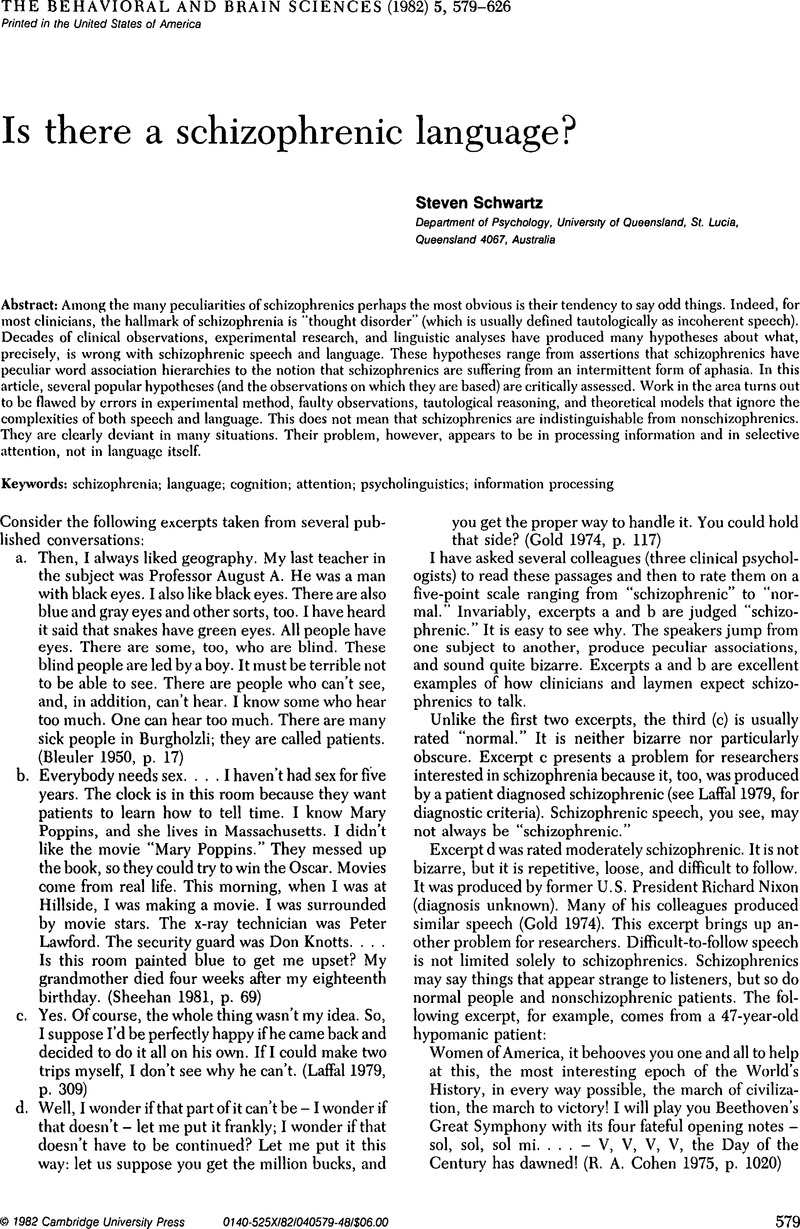Crossref Citations
This article has been cited by the following publications. This list is generated based on data provided by Crossref.
Schwartz, Steven
1984.
Semantic networks, schizophrenia, and language.
Behavioral and Brain Sciences,
Vol. 7,
Issue. 4,
p.
750.
Neufeld, Richard W. J.
1984.
Are semantic networks of schizophrenic samples intact?.
Behavioral and Brain Sciences,
Vol. 7,
Issue. 4,
p.
749.
Belinchón, Mercedes
1988.
Esquizofrenia y lenguaje: una aproximación psicolingüística.
Estudios de Psicología,
Vol. 9,
Issue. 33-34,
p.
105.
Chaika, Elaine
and
Lambe, Richard A.
1989.
Cohesion in schizophrenic narratives, revisited.
Journal of Communication Disorders,
Vol. 22,
Issue. 6,
p.
407.



